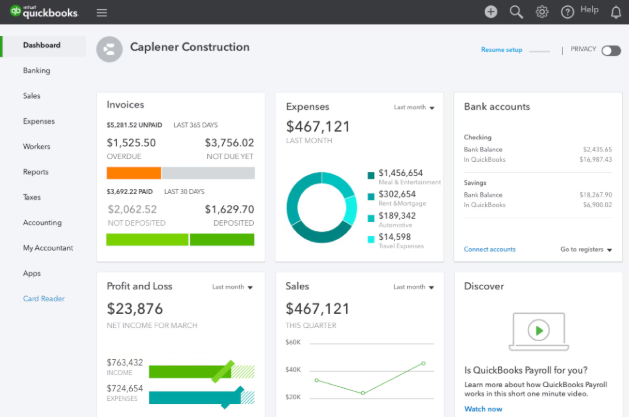Affiliate Disclosure: This post may contain affiliate links, which means I may earn a small commission—at no extra cost to you—if you make a purchase through my links. I only recommend products I love and trust! 💖
Starting a business can feel overwhelming, especially when you hear you need a 50-page business plan just to get started. But here’s the truth: You don’t need a complicated plan—you need a clear, simple roadmap that guides your decisions and keeps you focused.
This guide will walk you through a one-page business plan template that will help you launch and grow your business—whether you’re starting a service-based business, online store, coaching business, or freelance career.
By the end of this post, you’ll have a simple business plan that’s actionable, effective, and scalable as your business grows.
Why You Need a Business Plan (Even a Simple One!)
A business plan is not just for investors or banks—it’s for you. It’s a tool that keeps you focused and ensures you’re working on the right things.
Even a one-page plan will help you:
✅ Clarify your business idea and goals
✅ Avoid wasting time on distractions
✅ Stay financially prepared and profitable
✅ Build a realistic marketing strategy
A great business plan should answer six key questions:
- What problem does your business solve?
- Who is your target audience?
- What makes your business unique?
- How will you make money?
- How will you market your business?
- How will you track your finances and growth?
Let’s break it down!
📌 Related Post: Not sure where to focus? Read How to Focus on What Matters Most to stay on track.
Step 1: Define Your Business Idea 🎯
The first step in any business plan is to define what your business does and who it helps.
Ask yourself:
- What problem does my business solve?
- Who is my ideal customer?
- What product or service am I offering?
🔹 Example 1: Fitness Coach
“I help busy moms get in shape with 30-minute at-home workouts that require no equipment.”
🔹 Example 2: Online Jewelry Store
“I sell handcrafted, eco-friendly jewelry designed for fashion-conscious women who care about sustainability.”
🔹 Example 3: Consulting Business
“I provide social media marketing services for small business owners who want to grow their online presence and attract more customers.”
Pro Tip: Be specific! The clearer you define your business idea, the easier it will be to market and grow.
📌 Related Post: Need help identifying your audience? Read How to Define Your Target Market.
Step 2: What Makes Your Business Unique? (Your USP) 🔥
Your Unique Selling Proposition (USP) is what sets you apart from competitors.
Pro Tip
USP means “what makes your product better than you competitors?” Or, rather, what makes you a better option than anyone else?
Ask yourself:
- Why should customers choose you over others?
- What unique value do you bring?
- How do you solve the problem differently?
🔹 Example 1: Fitness Coach
“Unlike traditional fitness programs, my workouts are designed for busy moms and take only 30 minutes a day.”
🔹 Example 2: Online Jewelry Store
“My jewelry is made from recycled materials, making it both stylish and eco-friendly.”
🔹 Example 3: Consulting Business
“I specialize in working with small businesses that have limited marketing budgets and need results fast.”
Your USP is the key to standing out in a crowded market. Make sure it’s clear and compelling!
Step 3: How Will You Make Money? 💰 (Your Revenue Model)
Now, let’s talk about how you’ll generate revenue.
Ask yourself:
- What are my main revenue streams?
- Will I offer one-time purchases or recurring services?
- What is my pricing strategy?
🔹 Example 1: Fitness Coach
- $99 digital workout program (one-time purchase)
- $150/month private coaching (subscription model)
🔹 Example 2: Online Jewelry Store
- $50–$100 handmade jewelry pieces (one-time purchase)
- $30/month jewelry subscription box (recurring revenue)
🔹 Example 3: Consulting Business
- $500 social media strategy session (one-time service)
- $1,500/month ongoing social media management (retainer model)
Your business plan should clearly outline how you’ll generate income.
📌 Related Post: Read How to Price Your Services with Confidence for smart pricing strategies.
Step 4: How Will You Market Your Business? 📣
Having a great product or service isn’t enough—you need a plan to attract customers!
Ask yourself:
- How will I attract my first customers?
- Which platforms will I use to promote my business?
- What marketing strategies will I focus on?
🔹 Example 1: Fitness Coach
- Instagram (sharing workout tips and success stories)
- YouTube (posting free fitness tutorials)
- Email list (sending weekly fitness tips & offers)
🔹 Example 2: Online Jewelry Store
- Pinterest (posting product images & style inspiration)
- Instagram Ads (targeting fashion-conscious shoppers)
- Influencer Partnerships (getting jewelry featured by bloggers & influencers)
🔹 Example 3: Consulting Business
- LinkedIn (posting marketing tips & networking)
- Webinars (hosting free training sessions to attract clients)
- Blogging (publishing SEO-friendly content to drive traffic)
📌 Related Post: Read The Secret to Getting More Clients Without Spending a Fortune for free marketing strategies.
Step 5: Business Finances & Budgeting 📊
Keeping your finances organized is critical for success.
🔹 Example Costs for a Service Business:
- Website & domain: $10–$30/month
- Software subscriptions: $50–$100/month
- Marketing & ads: $100–$500/month
🔹 Example Costs for an E-commerce Business:
- Product materials: $500+ upfront
- Shopify or Etsy fees: $30–$50/month
- Shipping & packaging: Varies
Why QuickBooks is a Must-Have for Your Business Finances

Tracking finances manually wastes time and causes stress. QuickBooks simplifies your finances by:
✅ Automatically tracking income & expenses
✅ Sending invoices & managing payments
✅ Providing tax-ready financial reports
📌 Call to Action: Ready to simplify your business finances? Try QuickBooks today!
👉 Click here to learn more about QuickBooks
📌 Related Post: QuickBooks vs. Wave: Which One is Right for Your Business?
Final Step: Set Clear Goals & Expand Your Plan 🎯
Your business plan should grow with your business. Start simple, but expand over time with:
✔ More detailed financial projections
✔ Scaling strategies (hiring, expanding services)
✔ New marketing techniques
📌 FREE DOWNLOAD: Want to start your business the right way? Download our FREE Start Your Business Checklist to ensure you’re covering all the essentials!📌 Click Here to Get Your Free Start Your Business Checklist!








